What Is a Jazz Piano Chord Voicing?
When playing jazz piano, you can ‘voice’ each chord many different ways...
Take a look at just a few chord voicings I could use for a C major 7:

Each of these arrangements (show above) is called a ‘chord voicing’. They are all different ways of 'saying' the same chord.
All of the chord voicings above sound like C major 7 - but some have added colors (9ths, 11ths, 13ths)…
Some voicings have spread out sounds spanning more than an octave (open voicings, 4th voicings, or the Kenny Barron voicing), while others have a crunched up sound and span less than an octave (closed voicings and rootless voicings)…
Some voicings sound sophisticated by building the chord in 4ths (C B E A D), while others sound warm and emotional (C G B E).
As a jazz pianist, a BIG part of the fun comes from choosing which chord voicings you'll use to ‘voice’ a jazz song.
Types of Chord Voicing
Here are a few types of chord voicing that are commonly used by professional jazz pianists:
- ‘Closed position’ voicings - play literally what the chord symbol says - 1 3 5 7. Often played in root postition or 2nd inversion - 5 7 1 3.

- Open voicings - instead of playing the chord tones in 3rds (1 3 5 7), open voicings feature wider gaps between each note - 1 5 3 7, or 1 7 3 5, or 1 5 7 3 are some examples. Open voicings have a wider sound than closed voicings because they span from the bass - mids, and sometimes up to the treble.
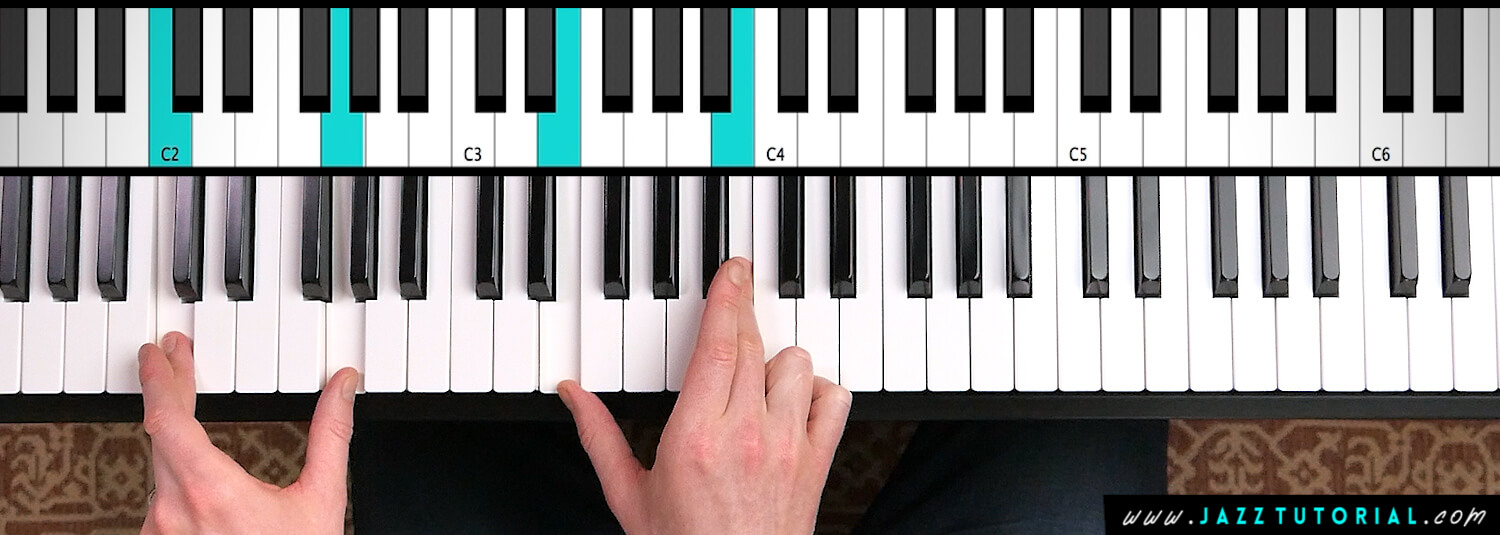
- Shell voicings - 1 7 3 or 1 3 7. These minimal 3 note voicings give the soloist maximum freedom to choose whichever scales they want to play from.
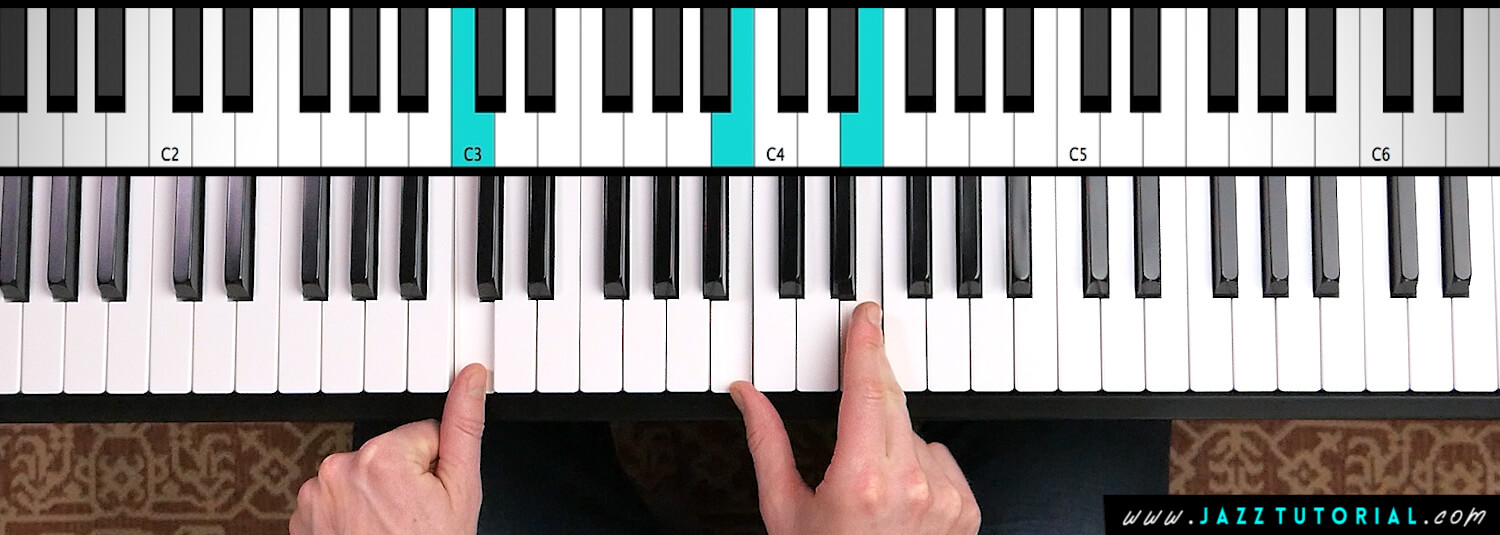
- Rootless voicings - 3 5 7 9, or 7 9 3 5. Rootless voicings are very commonly used when playing with a bass player. The pianist tends to play these in their left hand, leaving the root of the chord to the bassist. You can then solo in your right hand, or play the song’s melody.
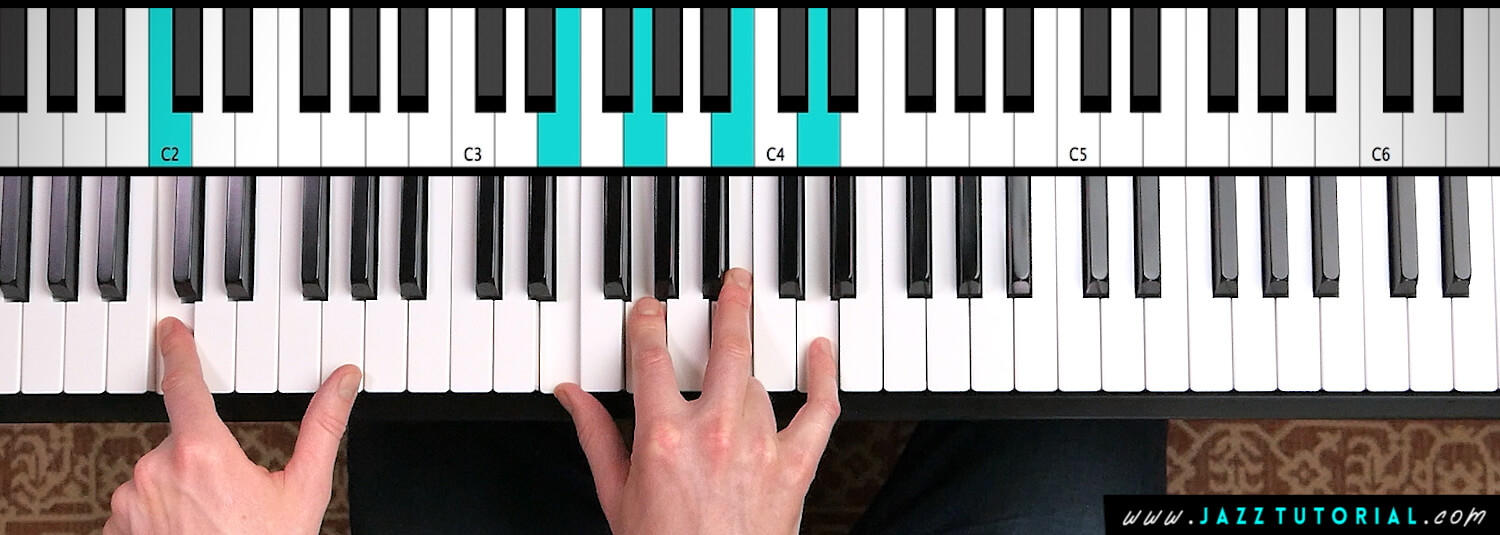
- 4th voicings - many modern jazz pianists create voicings as stacks of 4ths. For example, C major 7 could be voiced as a stack of 4ths starting from the chord’s 7th - (C) B E A D.
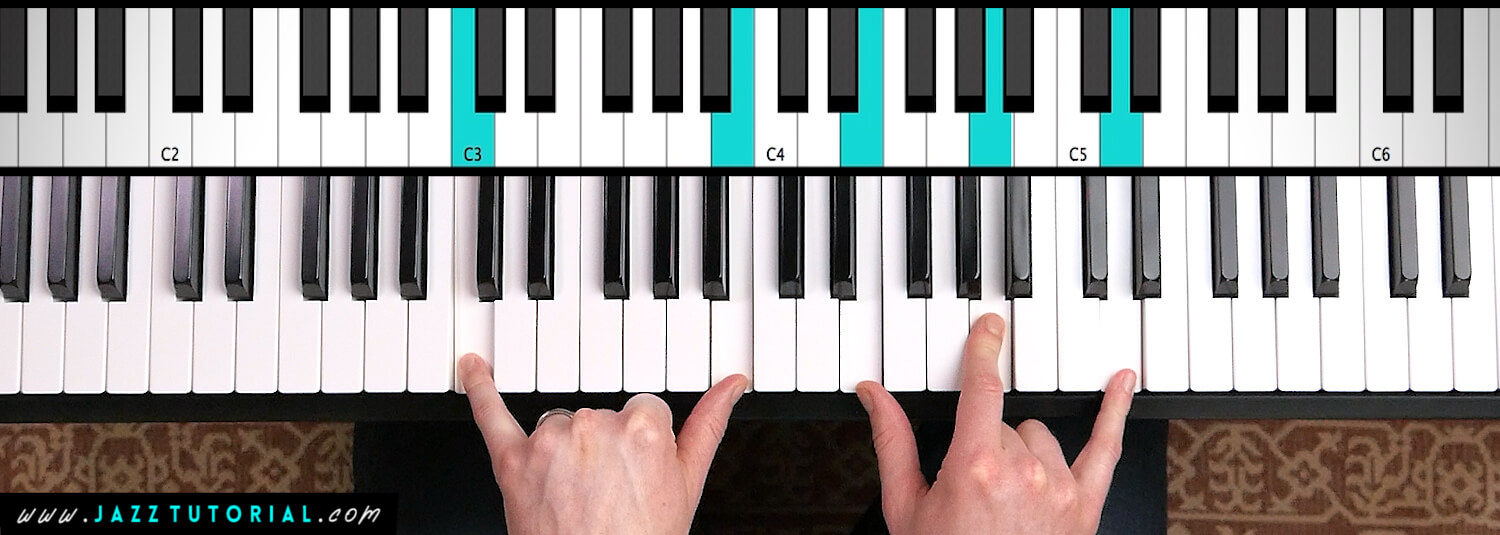
- Upper Structures - a type of two-handed chord voicing used for V7 chords. Upper structures work by playing the chord’s 1 3 7 in the left hand (e.g. C E Bb for C7), and then playing one of several triads in the right hand. For example, here's D major (D F# A) played over C7:
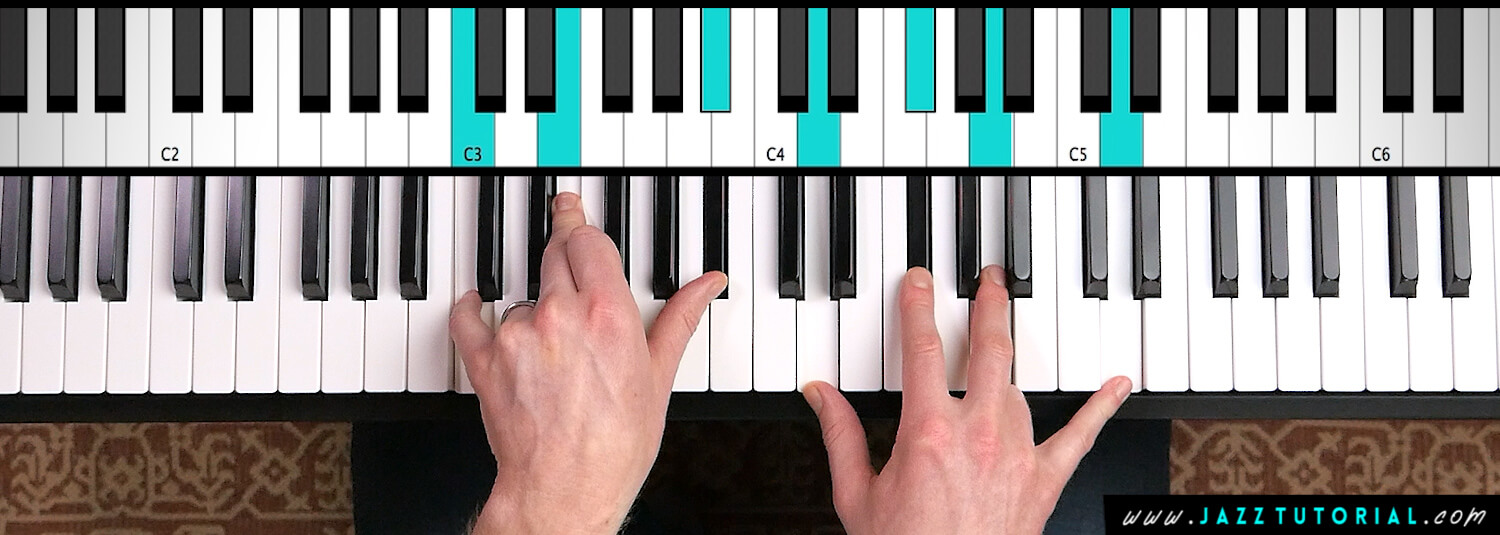
Other right-hand triads you can play over C7 include Eb major (Eb G Bb), Ab major (Ab C Eb, and A major (A C# E). Each triad adds its own collection of chord extensions.
FREE RESOURCE: For more jazz piano chord voicings, you can download my free ‘Jazz Piano Chord Voicing Guide' which shows you 5 types of chord voicing used by professionals (shells, 4th voicings, rootless voicings, and more): Click here to download
How to Voice Jazz Songs
As a beginner, I suggest you start by playing ‘closed voicings’ only (playing literally what the chord symbol says, 1 3 5 7). You can play any jazz song using just 1 3 5 7 and 5 7 1 3 of each chord (root position and 2nd inversion), while playing the melody line above in your right hand:

However, for more advanced players who have learned multiple types of chord voicing - I recommend using a technique I call ‘melody matching’. Here's how it works:
Look at what the melody note is in relation to the chord (e.g. 9th, 5th, 7th, etc), and then choose a chord voicing that already has that note as its top note.
That way, you can play the chords and melody together, just by playing carefully chosen chord voicings throughout the song:

NOTE: You only have to look at the first melody note played to choose your chord voicing. Most melodies will change notes later in the bar, but you can keep the same chord voicing in place. Sometimes you'll have to release some of the top notes from the chord voicing if the melody moves downwards into the chord and needs space.
Let's take some examples...
Say that the chord is C minor 7 and the melody note is D - the 9th. Which chord voicing will you use?
Well in this case, you'd want a minor 7 chord voicing that has the 9th as its top note - like this 'rootless voicing' (1 / 3 5 7 9) for example:

Or let's say the melody note was a Bb (the minor 7th) over the same C minor 7 chord. Which chord voicing will you use?
Well in this case, you'd want a minor 7 chord voicing that has the 7th as its top note - like this 'open voicing' (1 5 3 7) for example:
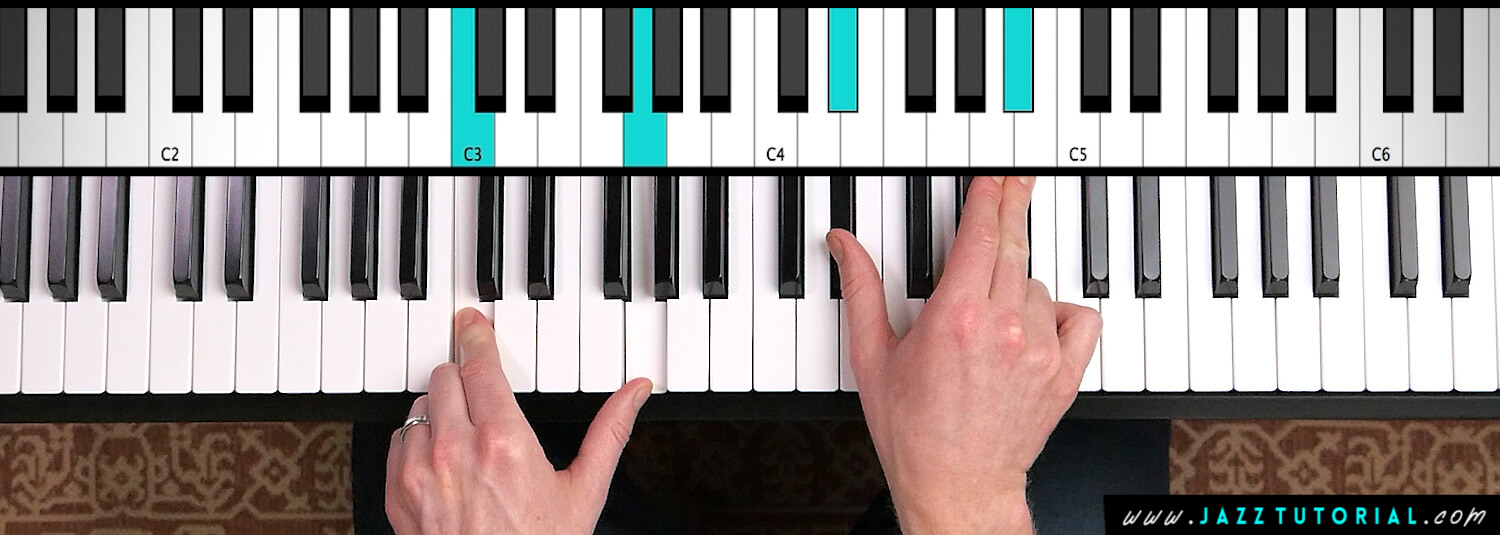
Or finally, let's say the melody note was an F (the 11th) over the same C minor 7 chord. Which chord voicing will you use?
Well in this case, you'd want a minor 7 chord voicing that has the 11th as its top note - like this 'Kenny Barron voicing' (1 5 9 / 3 7 11) for example:
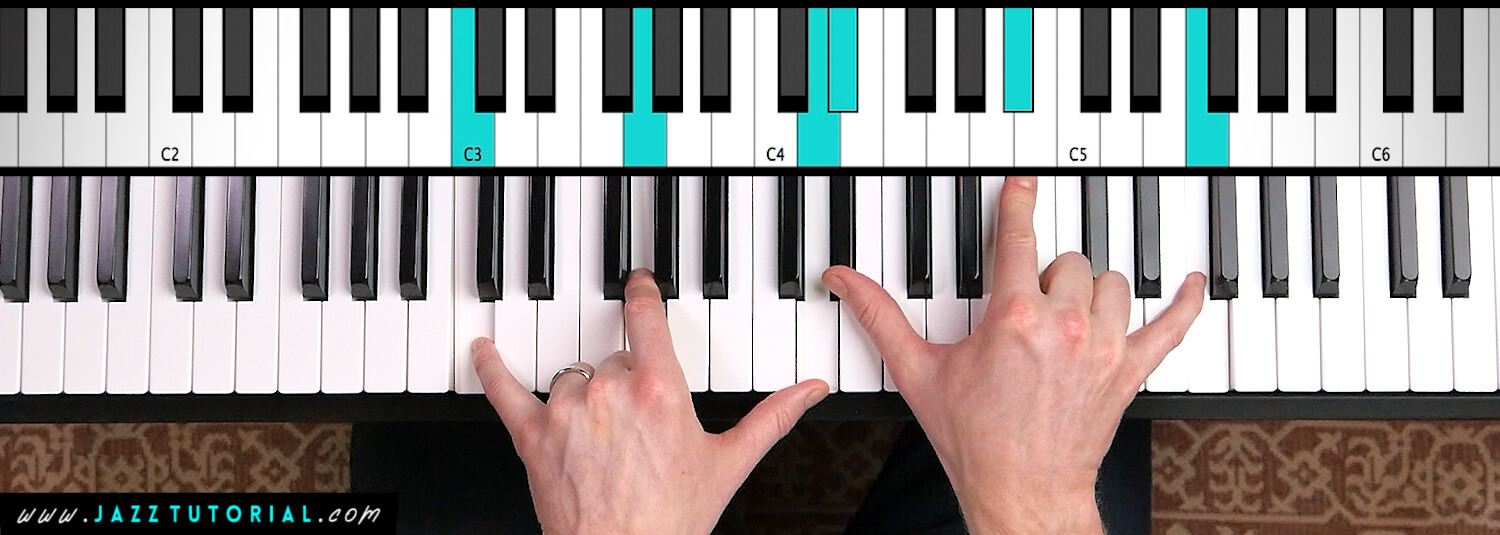
And you would continue to work your way through the song, one chord at a time, choosing chord voicings which contain the melody note as their top note. This will need to be done slowly, and I suggest writing your chord voicings above the sheet music.
Free Sheet Music
Can I send you 39 pages of Jazz Piano sheet music?
-
Includes '29 Jazz Licks' (sheet music)
-
'The Chord Voicing Guide' (ebook)
-
'Sweet Chord Progressions and Riffs' (sheet music)
About the Author
Julian Bradley is a Jazz pianist and music educator from the U.K. He has a masters degree in music composition and loves helping musicians learn Jazz piano and reach their music goals. YouTube channel.
